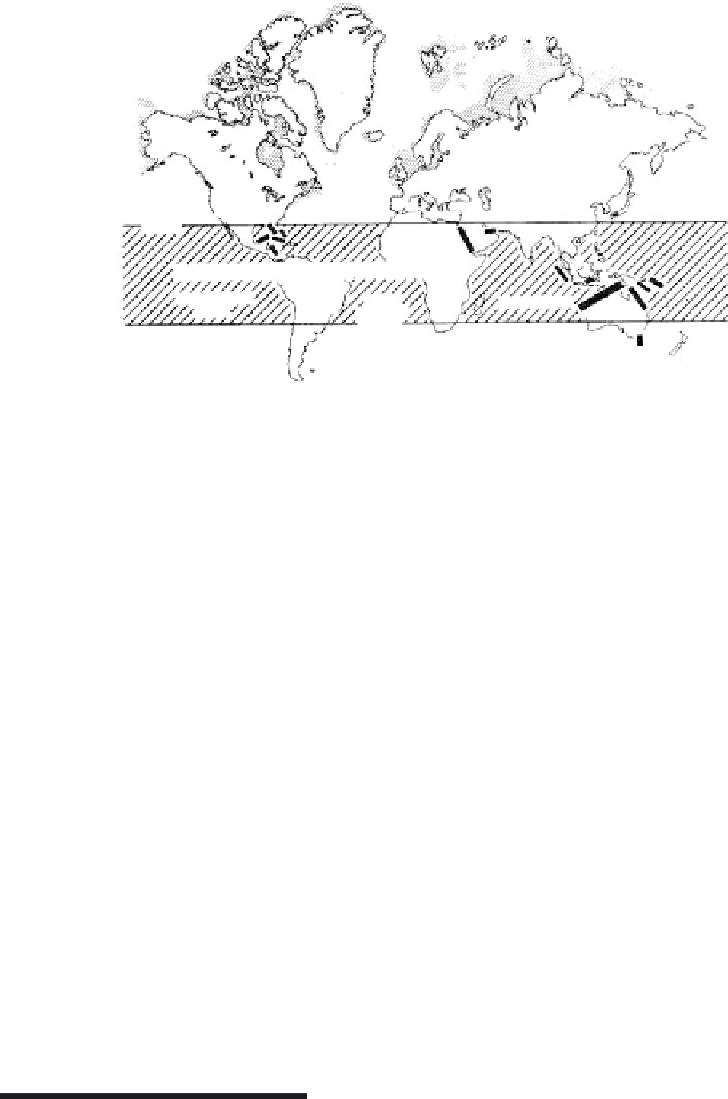Environmental Engineering Reference
In-Depth Information
ARCTIC OCEAN
ARCTIC OCEAN
NORTH
ATLANTIC
OCEAN
NORTH PACIFIC
OCEAN
30
N
°
ZONE OF GREATEST CARBONATE DEPOSITION IN THE SEA
SOUTH PACIFIC
OCEAN
SOUTH
ATLANTIC
OCEAN
INDIAN OCEAN
30
S
°
FIGURE 7.61
Major deposits of carbonate sediments on continental shelves around the world. (From McClelland, B.,
Terzaghi
Lectures: 1963-1972
, ASCE, New York [1974], pp. 383-421. With permission. After Rodgers, J.,
Regional Aspects of
Carbonate Deposition
, Society of Economic Paleontologists and Mineralogists, Special Publication No. 5, 1957,
pp. 2-14.)
factors, which are based on the coefficient of lateral earth pressure (McClelland, 1972;
Agarwal et al., 1977).
Marine Clays
Recent deposits of marine clays are normally consolidated, but at depths of about 300 ft or
more below the seafloor they are often found in a stiff or greater state of consistency.
Typical properties from several locations are given in
Table 3.38.
Stiff to hard clays can also
exist in areas formerly above sea level, which subsequently submerged. Heavily overcon-
solidated clays (stiff to hard consistency), for example, thought to be possibly preglacial in
origin, have been encountered in the North Sea (Eide, 1974).
Because clays deposited in seawater tend to flocculate and settle quickly at the bottom,
they are generally devoid of laminations and stratifications common to freshwater clays.
Marine clays of glacial origin are discussed in
Section 7.6.5.
Classification of Carbonate Sediments
A system of classification of Middle Eastern sedimentary deposits has been proposed by
Clark and Walker (1977). Given in
Table 7.10,
it has been applied by practitioners to the
worldwide carbonate belt.
7.5
Eolian Deposits
7.5.1
Eolian Processes
General
The geologic processes of wind include transportation, erosion (deflation and abrasion),
and deposition (sand dunes and sheets, loess, and volcanic clays).


